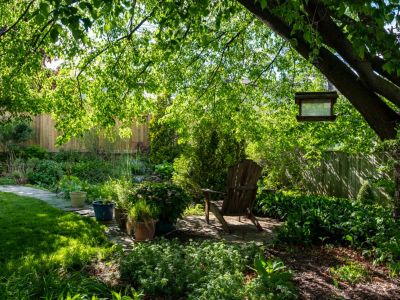Gardening in the Shady Garden
First, let’s evaluate that shady area of your yard. Is it located under a tree or next to the house? Most shady spots are not only deprived of sun but also of moisture. The tree’s roots take up a lot of the moisture available; similarly, the average home has an overhang preventing rain from reaching within a foot (0.5 m.) of the foundation. Pay special attention to the water needs of the plants you locate in these areas and don’t skimp on soil preparation. The soil may be not only dry but compacted as well. Try adding compost and organic matter, such as rotted leaves, to the soil. It will hold moisture more efficiently and send air and nutrients to the roots of your shady plants. The amount of sunlight a shady area receives is also important to understand. If there is no direct sunlight reaching the desired area, be sure to select plants that are suitable for “full shade” like:
ferns impatiens lily-of-the-valley
If the bed you’re working with receives dappled sunlight throughout the day or perhaps a few hours of direct sunlight, you will be able to work with a wider variety of plants and most likely can choose plants suitable for “partial shade” such as:
astilbe gloriosa daisy hibiscus
Simply keep an eye on that bed for a day and jot down in your garden journal how much direct sun the bed receives, if any. Shade cast by a deciduous tree, like a maple, can be one of the easiest spots to reckon with because it has little or no leaves for half of the year. Planting sun-loving, spring-blooming crocus or tulips under such a tree is ideal, while then moving on to a few warmer weather shade plants like caladium, with its beautiful, tropical foliage, or the showy hosta. Even pansies and Johnny-jump-ups are content in the shade, given some sun throughout the day and a good supply of food, water, and love. The maintenance required of the shade garden is one of its finest features, especially if you’ve chosen to mulch it with bark, rock, or anything else that tickles your fancy. Mulching will retain moisture and since it’s already shady, you won’t lose moisture to the hot sun’s rays. Thus, you won’t have to drag that watering can out nearly as often. Also, shady spots tend to be miraculously short on weeds that prefer the sunlight of your vegetable garden instead. So you can spend your time enjoying the shade of your favorite hammock instead. Aaaah, the shady life, ain’t it grand?
